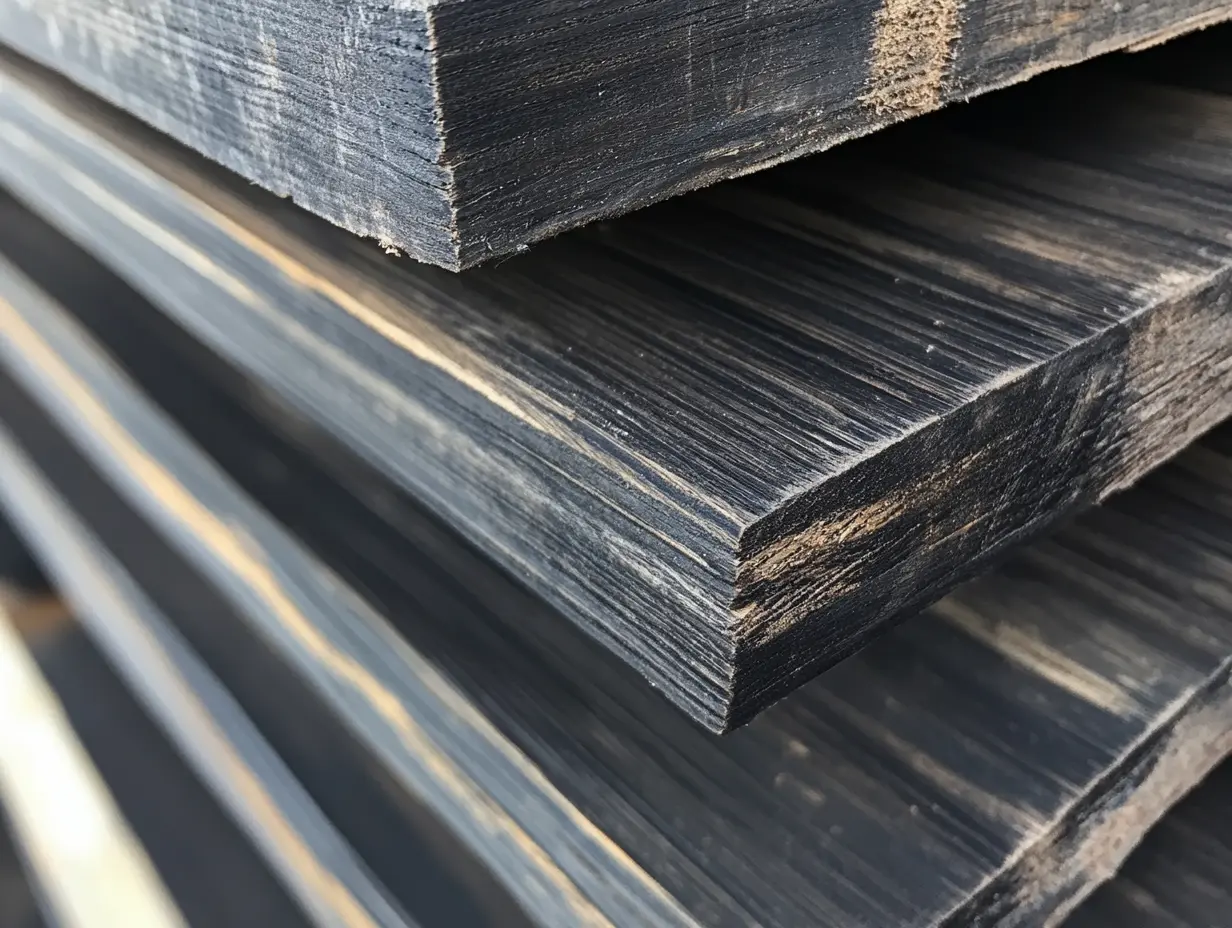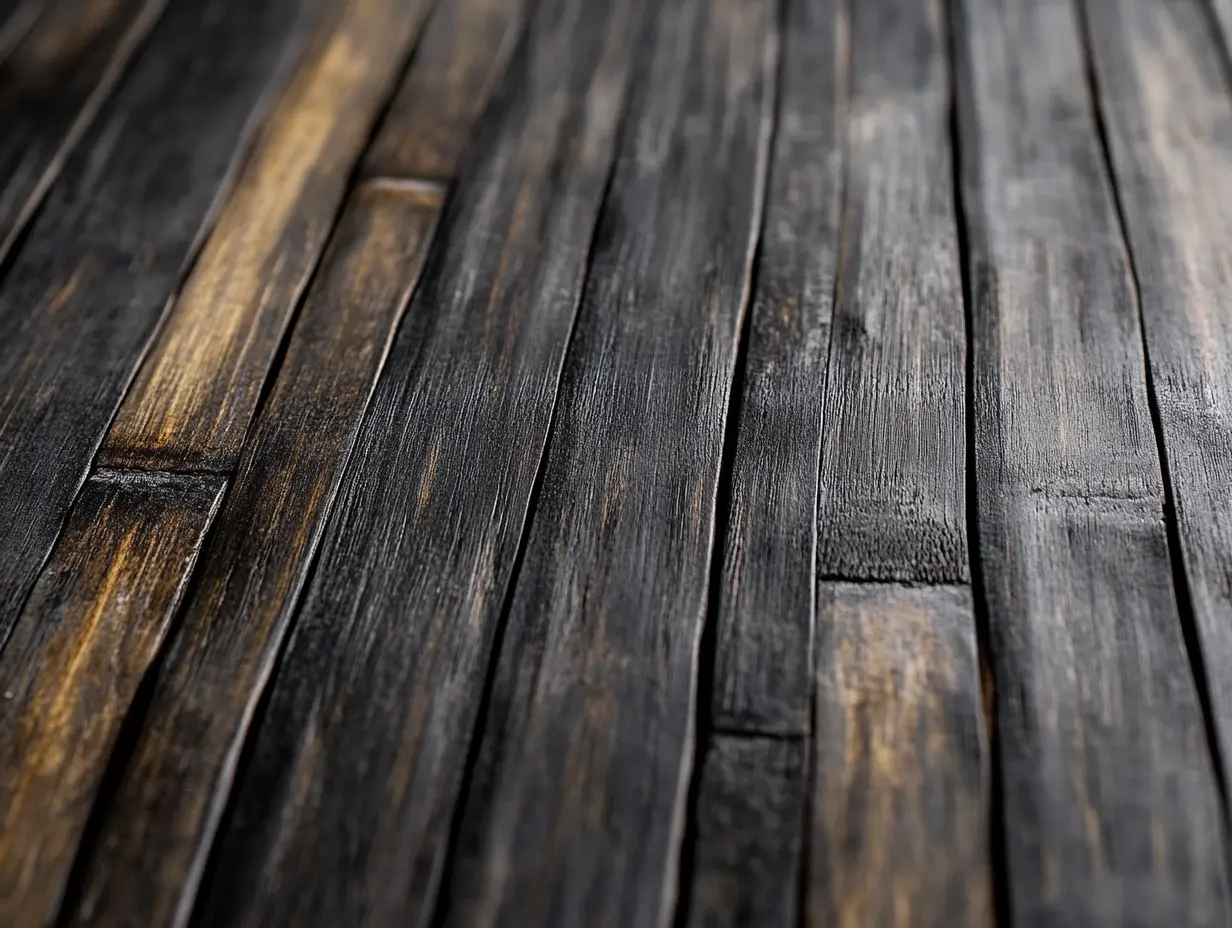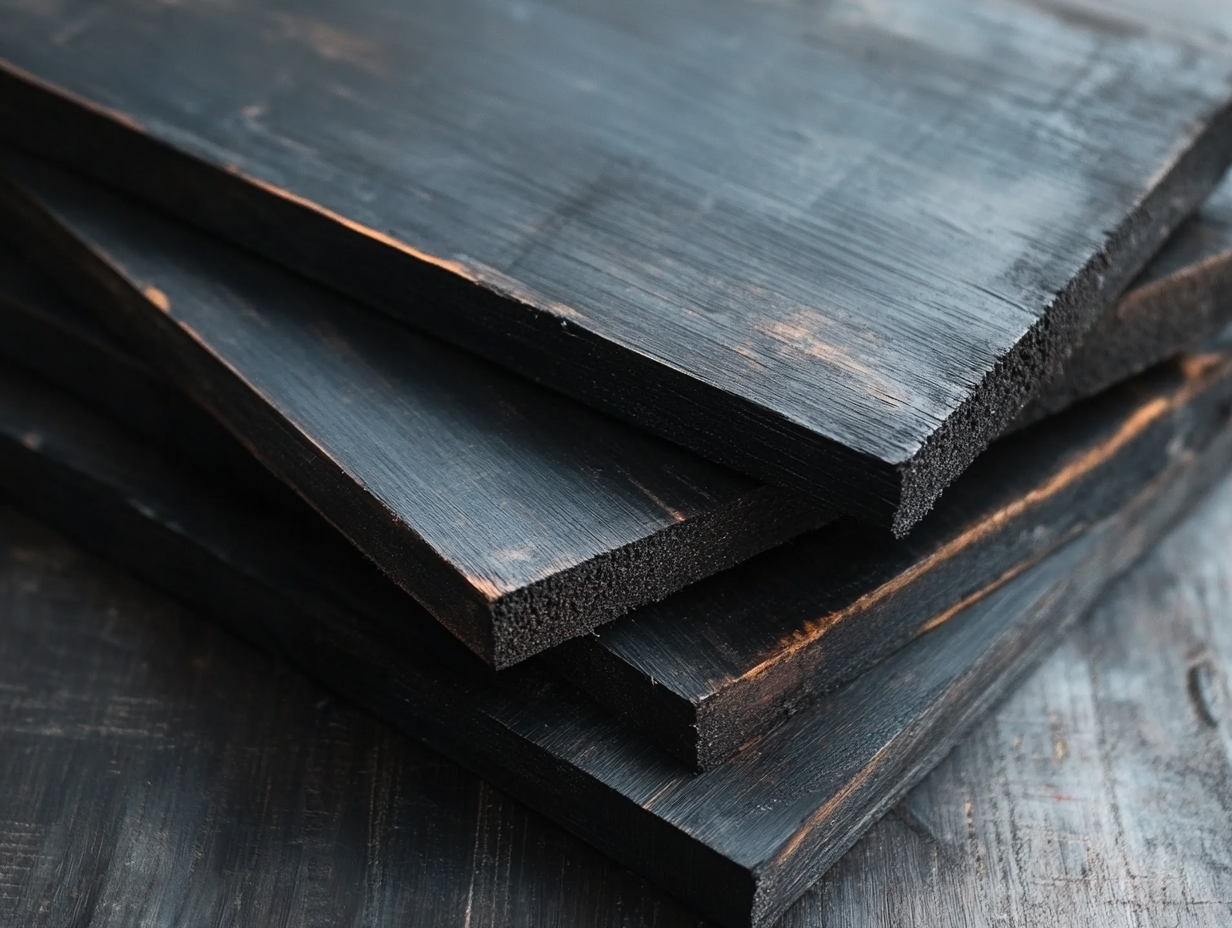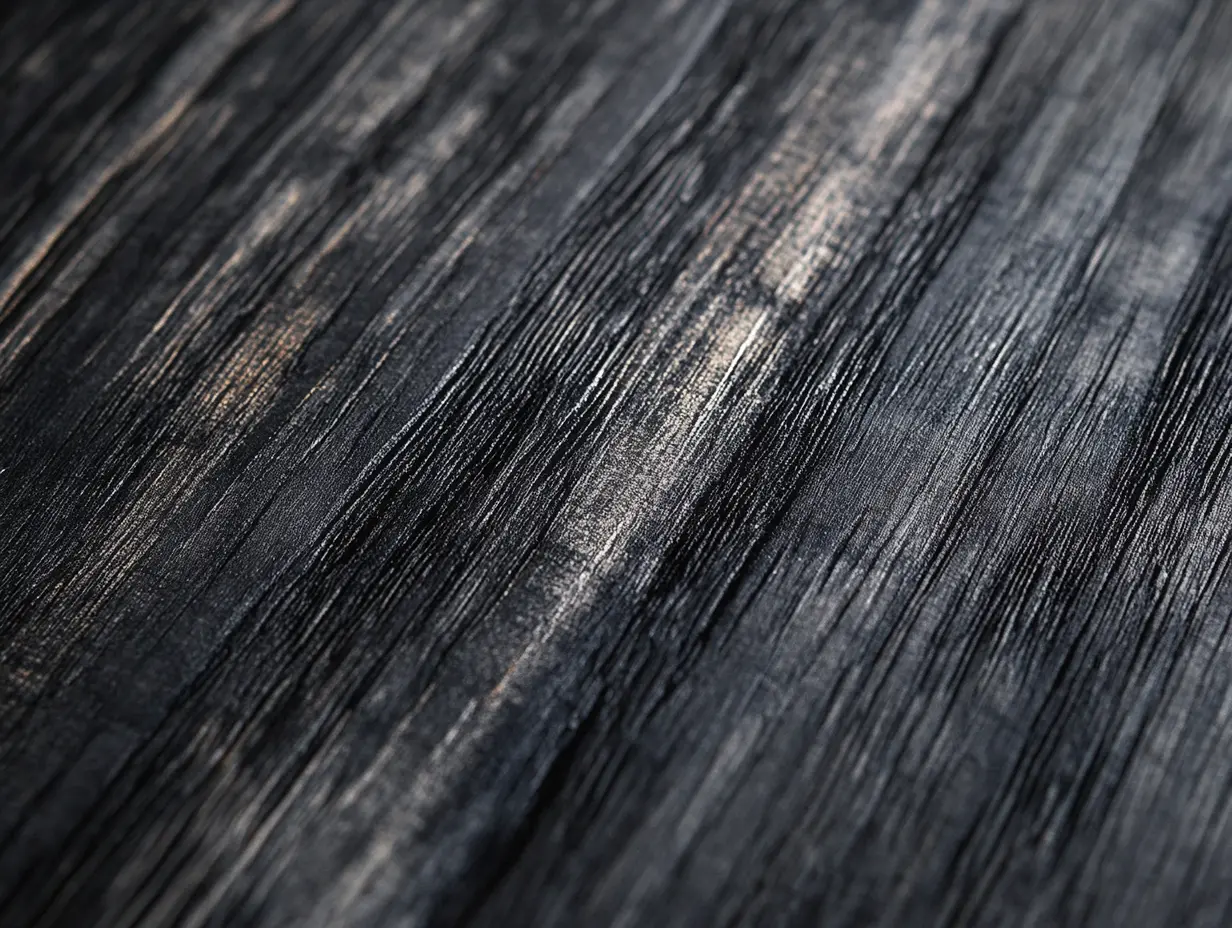Leave Your Message
The demand for sustainable material saw the highest point in history in today's eco-conscious marketplace. An innovative product that is winning acceptance in the marketing is Bamboo Charcoal Wood Veneer, which is appreciated not only for its aesthetic properties but also for its environmental goodness. A sophisticated product, it combines durability, flexibility, and natural aesthetics, which are fast becoming the material of choice for global sourcing in furniture design as well as decoration.
Linyi Qizhu Environmental Technology Co., Ltd. aims to promote sustainable methods while providing high-quality Bamboo Charcoal Wood Veneer to a wide clientele all over the world. The company enjoys prominence in the supply market through its innovative designs that give credence to environmental consideration. This buying guide explains the main concerns associated with sourcing Bamboo Charcoal Wood Veneer, putting you in an informed position when making decisions that not only further the projects you are engaged in but also work toward a greener future.

Finding trustworthy international suppliers of bamboo charcoal wood veneer has been made with scientific importance. The veneer sheets market has been increasingly growing from the period of now till 2035, as more high-quality interior decoration solutions are vastly going up. This is what advocates the movement to sustainable materials like bamboo charcoal- both for its visual asthetic as well as great environmental friendliness. Illegal logging, however, is one of the hurdles in attaining sustainability. Buyers must ensure that their suppliers utilize ethical procurement norms in their operations. This not only gives credence to the environment but also the end product being used in an interior design project. For veneer investment, becoming responsible sources would be wise to consider while sourcing bamboo charcoal wood veneers.

Bamboo charcoal wood veneer is becoming more and more important because of its specific properties plus its sustainable advantages. Unlike timber, bamboo may be cultivated in about five to six years with a harvesting technique that is less harmful to the environment. This way, it is becoming more fashionable and more accepted as an environment-benefiting material. One benefit is to minimize the volatile organic compounds occurring from synthetic substances and odors in the indoor environment.
Bamboo charcoal wood veneer, however, needs to be harvested in an environmentally responsible way. Recent reports from various organizations are attributing illegal logging instances to the timber trade in countries such as China, whereas there has emerged the possibility that 'greenwashing' plays into the hands of some unethical logging corporations. Buyers should check certified bamboo products that come from reputable suppliers so that they may support sustainable practices that safeguard both forests and local ecosystems. When this gets implemented, it will underscore the importance of transparency in sourcing, which will, in turn, safeguard the integrity and sustainability of bamboo charcoal wood veneer.

Bamboo charcoal veneer becomes one of the factors in budgeting once you've decided to use this product for your home or business. First things first: ascertain your requirements and how much is required, as this factor would greatly affect the costs involved. Bamboo charcoal wood veneer is reputed for its strength and beauty, which are the defining features behind its various applications from furniture to interior design elements.
Next, do some research on other sources and price them; with widely varying quotes depending on source and quality of veneer there is a lot of range here. There are other costs such as shipping and possibly installation fees that should also be considered. Spending time on proper research and cost analysis leads toward better buying decisions that are capable of beautifying your space with the character and utility of bamboo charcoal wood veneer.

Bamboo charcoal wood veneer is a remarkable material renowned for its ecological aspects as well as attractiveness. Bamboo is a renewable resource, and the charcoal treatment gives this material durability and an attractive texture. The very purpose of this overview emphasizes the need to learn the properties and advantages of bamboo charcoal wood veneer before purchasing.
One must consider the various applications for bamboo charcoal wood veneer while sourcing their product- on furniture or on decorations. The natural water and odor-resistant properties make this material a good approach for indoor and outdoor applications. Moreover, bamboo charcoal is known to purify the atmosphere by absorbing toxins and contaminants. Examining these qualities will make it easier for consumers to choose the most suitable product to meet their requirements while also promoting the green choice.
In sourcing bamboo charcoal wood veneer, one must bear in mind several key aspects to ensure quality and ethical considerations. First of all, the source of the bamboo must be verified. Recent news about timber illegally harvested in China underlines the importance of due diligence. Buyers should look for suppliers who are fully transparent in their supply chain system, showing beyond a reasonable doubt that the product is sourced sustainably and legally.
Another aspect to take into consideration would be certification. While the product may claim to be sustainable, it is important to know what this sustainability claim really stands on. That is, checking if the certifications are for real and not some "greenwashing" means masking dirty practices. In the end, adequate due diligence and commitment towards sustainability will allow buyers to make informed decisions in the bamboo charcoal wood veneer market.
Green sourcing practices pertaining to bamboo products have enjoyed quite some prominence of late as consumers increasingly prefer eco-friendly materials. Bamboo qualifies as a very fast-growing grass that hardly needs any resources and is considered the best bet not only by environmentally aware manufacturers but also by environmentally conscious consumers. In choosing bamboo charcoal wood veneers, consideration should be given to sources that crucify the aesthetic with regard to sustainability. Always look for products that have been certified by respected environmental organizations to ensure they are responsibly sourced.
The international arena has also seen dynamic changes in its regulation impacting the movement of charcoal products across borders. The new advice provided by the World Shipping Council places a requirement for the declaration of charcoal as a dangerous good, thus bringing about further emphasis on careful handling and compliance in international trade. This emphasis indicates the importance of transparency and due diligence in sourcing practices whereby materials you choose ought to be safe and environmentally positive.
An awareness of the standards and regulations is very important when sourcing bamboo charcoal wood veneer. These certifications guarantee product quality, sustainability, and safety, thus reassuring the user. Find the relevant certifications stating that they comply with environmental regulations and the ethical sources so that you can feel confident by using those products, which most likely give something back to the environment as well.
Further to certifications, aesthetic appeal should be considered together with bamboo products' functions. Bamboo veneer is great in terms of style for anything from furniture to fixtures to decor. While shopping, keep an eye out for options that suit your style preferences but comply with industry standards. By selecting certified bamboo products, you will be contributing beautiful and responsibly sourced materials to your home.
Sourcing bamboo charcoal wood veneer is all about authenticity and quality. Growing global demand makes it all the easier for such timber to be acquired illegally. Recent accounts speak to some suppliers indulging in "greenwashing", a condition under which unsustainable or illegally sourced timber is passed as "green". Buyers need to pay extra attention, and have their sources be certified and trustworthy.
To validate the wood veneer, proper documentation should always be requested for available proof of sustainable harvesting. You can look out for third party certificates accredited to the international standard. Furthermore, engaging with the suppliers directly can enable you to understand their sources of supply. This knowledge is not only keeping you guarded with your investment, but also helps in the development of responsible foresting practices.
From stretch wall panels to stylish accents and decoration of furniture, the bamboo charcoal wood veneer slowly makes its way into the designer magazines and the trend books. The texture and the rich earth tones of this veneer make it applicable for creating warm interiors in both commercial and residential fields. Such versatility allows designers to play with this material to provide a further depth and character to minimalistic and modern aesthetics.
The latest trends in materials spotlight sustainability, with bamboo charcoal taking center stage. It's a veneer that is a stunning decorative element and actually helps protect the environment. Designers using bamboo charcoal wood veneer can achieve a sophisticated look while supporting green practices. This is increasingly in demand from consumers looking for sustainable places of finishes in the area of interior design.
Quality control is abhorrent in the evaluation of bamboo charcoal wood veneers, where qualities such as uniform thickness, color matching, and absence of defects are determined. A greatly polished surface should exhibit the beauty of bamboo, soon to be noted as a luxury for various purposes, among which would be high-end automobile interiors.
The versatility of bamboo allows for more creative designs such as twisted veneer sheets used in modern furniture. Today, processing advancements have focused more on bamboo as a sustainable alternative to traditional materials. For example, transparent bamboo is now positioning itself as a substitute for glass, with high light transmittance and impressive resistance capacity. Such developments show how increasingly important the choice of materials is in product design, especially for sustainability-hungry consumers.
It's crucial to verify the sourcing of the bamboo to ensure it is obtained sustainably and legally, avoiding products from illegally harvested timber.
Certification is important because it provides assurance that the products are genuinely sustainable and not simply marketed as such through "greenwashing" tactics.
Transparency in the supply chain is essential for ensuring that products are sourced ethically and sustainably.
Check if the certifications are recognized by reputable environmental organizations and confirm their legitimacy to avoid misleading claims.
Bamboo is a fast-growing grass that requires minimal resources, making it a sustainable choice for manufacturers and consumers focused on minimizing environmental impact.
New guidelines from the World Shipping Council require charcoal to be declared as a dangerous good, necessitating careful handling and compliance in global trade.
When selecting bamboo charcoal wood veneer, one should prioritize both its aesthetic appeal and the sustainability of its sourcing practices.
Sustainable sourcing benefits consumers by ensuring that the materials they choose are ethically produced, contributing positively to the environment.
Due diligence is important as it helps buyers verify the ethical and sustainable claims of products, fostering responsible consumption.
Sustainability trends have led to increased demand for eco-friendly materials, pushing manufacturers to adopt responsible sourcing practices for bamboo products.
